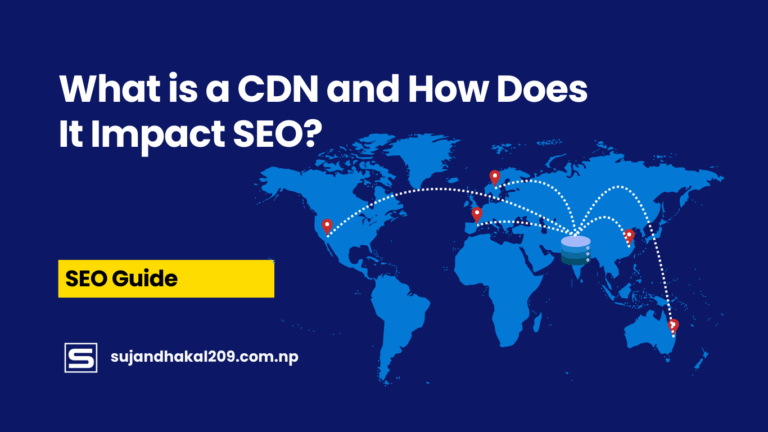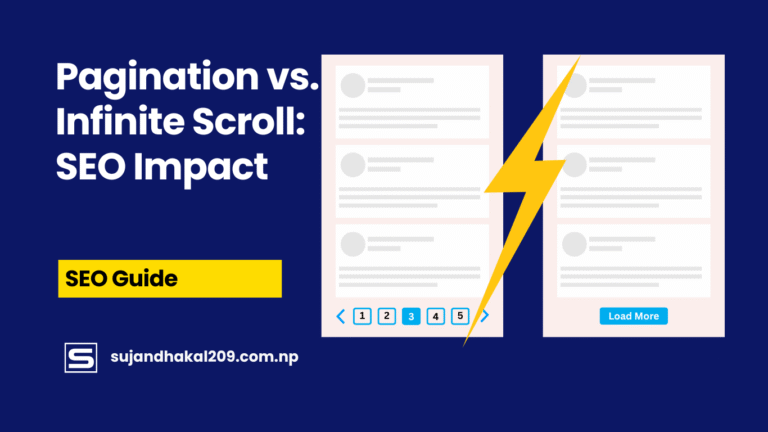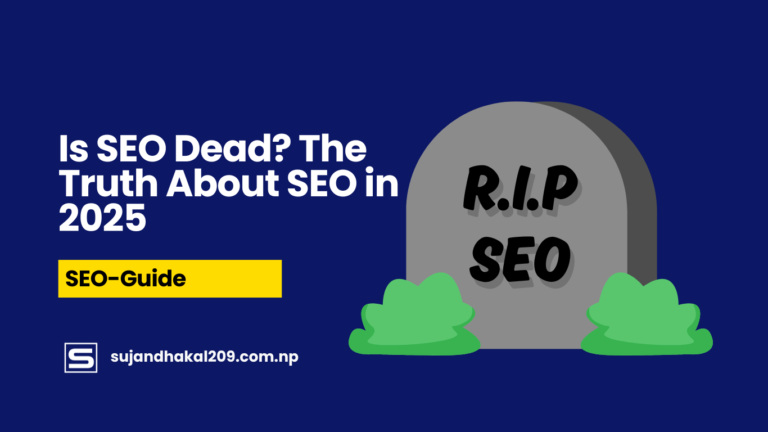Identifying and Fixing Common XML Sitemap Errors
Syntax errors are one of the most basic yet crucial issues in XML sitemaps. Even a minor error, like a missing closing tag or an improperly formatted URL, can cause search engines to reject the entire sitemap. These kinds of errors are usually easy to catch using tools like Google Search Console, Screaming Frog, or XML sitemap validators. But just because it’s easy doesn’t mean it’s unimportant. These syntax glitches can significantly hamper your indexing efforts, especially if search engines can’t even read your sitemap in the first place.
Make it a habit to check for proper XML tags, correct URL encoding, and the inclusion of the required fields like <loc>, <lastmod>, <changefreq>, and <priority>. Also, ensure that your file follows the standard XML structure and schema. If you’re hand-coding your sitemap (not recommended for large sites), always validate before submission.
Removing Non-Canonical URLs
Another common issue is listing non-canonical URLs in your sitemap. These are URLs that aren’t the preferred version you want indexed. For example, if both the HTTP and HTTPS versions of a URL exist, the HTTPS one is typically the canonical version. Including both can confuse crawlers and dilute ranking signals.
Use canonical tags in your HTML and ensure your sitemap only includes canonical URLs. If your CMS auto-generates your sitemap, double-check that it adheres to your preferred URL format. Remove any duplicate or parameterized URLs that lead to the same content, such as those with session IDs, tracking codes, or irrelevant query strings.
Eliminating Redirects and 404 Errors
Redirect chains and broken links are sitemap killers. Including URLs that result in 301 or 302 redirects—or worse, 404s—can frustrate search engines and signal a poorly maintained site. These issues not only waste crawl budget but also affect the trustworthiness of your site in the eyes of Google.
Run your sitemap through tools like Screaming Frog or Sitebulb to find redirected or broken URLs. Once identified, replace them with the correct, final destination URLs. Always aim to keep your sitemap free of any non-functional or transitional URLs. Remember, the goal is to make indexing as frictionless as possible.
Submitting Your Sitemap to Search Engines
How to Submit to Google Search Console
Google Search Console (GSC) is your best friend when it comes to submitting and managing sitemaps. Start by logging into your GSC account, navigating to the correct property, and heading to the “Sitemaps” section. Enter the path to your sitemap (e.g., /sitemap.xml) and hit submit.
After submission, GSC will begin processing the sitemap and report back with indexing stats, errors, and warnings. This is a goldmine of data. You can see which URLs were submitted, how many were indexed, and which ones were excluded. Use this info to continuously refine your sitemap and overall site structure.
Bing Webmaster Tools and Other Search Engines
Although Google is the giant, don’t ignore other players like Bing. Submitting your sitemap to Bing Webmaster Tools is straightforward. Once verified, go to the “Sitemaps” section, paste in your sitemap URL, and submit. Yahoo uses Bing’s search infrastructure, so you’re essentially hitting two birds with one stone.
You might also want to include your sitemap in your robots.txt file by adding a line like:
Sitemap: https://www.yoursite.com/sitemap.xml
This makes it easier for any search engine bot crawling your site to discover the sitemap without needing a manual submission.
Monitoring Sitemap Performance Over Time
Using Google Search Console Reports
Google Search Console offers detailed insights into your sitemap’s performance. You can see how many URLs are submitted vs. indexed, which pages are being excluded, and the reasons why. This helps you spot trends, like drops in indexing, which could hint at deeper technical or content issues.
Check the “Coverage” report regularly to identify anomalies. If certain pages are consistently not being indexed, it might be due to “noindex” tags, thin content, duplicate issues, or crawl errors. Fixing these promptly ensures your sitemap reflects only pages worth indexing.
Keeping a Regular Audit Schedule
A sitemap isn’t a set-it-and-forget-it file. Websites evolve—pages get added, deleted, redirected. That’s why regular auditing is essential. Set a recurring calendar reminder—monthly or quarterly depending on your content update frequency—to audit your sitemap.
During these audits, check for:
- New pages that should be added
- Deleted or outdated URLs that need removal
- Pages that changed from indexable to non-indexable
- Proper
<lastmod>date usage
Consistent maintenance ensures that your sitemap remains a true, accurate reflection of your site’s content hierarchy and quality.
Advanced Sitemap Strategies for Large Websites
Splitting Your Sitemap by Content Type
If your website has thousands of pages—think e-commerce stores, news sites, or online directories—it’s smart to split your sitemap into multiple files based on content type. For example, you might create separate sitemaps for:
- Blog posts
- Product pages
- Category pages
- Images
- Videos
Doing this keeps your files manageable (remember, the limit is 50,000 URLs or 50MB uncompressed per sitemap) and makes it easier to isolate and audit issues. Google and Bing handle sitemap index files, which means you can reference multiple sitemaps in one “index” file, like:
<sitemapindex xmlns="http://www.sitemaps.org/schemas/sitemap/0.9">
<sitemap>
<loc>https://www.example.com/post-sitemap.xml</loc>
</sitemap>
<sitemap>
<loc>https://www.example.com/product-sitemap.xml</loc>
</sitemap>
</sitemapindex>
This modular approach also helps you scale SEO operations efficiently.
Leveraging Image and Video Sitemaps
Image and video content play a huge role in driving traffic. By creating dedicated image or video sitemaps, you increase the chances of this media being discovered and indexed.
Image sitemaps should include details like the image URL, title, caption, and license. For videos, metadata such as title, description, duration, and thumbnail URL are essential. This structured information helps search engines serve your rich content more prominently in search results and image carousels.
Use schema markup in conjunction with media sitemaps to double-down on visibility. The goal here is to make your non-text assets as crawlable and understandable as your written content.
Ensuring Sitemap and Robots.txt File Synergy
Avoiding Conflicting Directives
Your sitemap might say “please index this page,” but your robots.txt might be yelling “stay out!” If the two files conflict, search engines will likely follow the more restrictive instruction. This can seriously damage your indexing strategy.
Always review your robots.txt directives and compare them with the URLs in your sitemap. If a page is disallowed in robots.txt, it shouldn’t appear in your sitemap. Tools like Screaming Frog or Ahrefs’ Site Audit can cross-reference these two files and flag discrepancies.
Including Sitemap Location in Robots.txt
To streamline crawler discovery, always include the path to your sitemap in the robots.txt file. It’s a one-liner that packs a punch:
https://www.yourdomain.com/sitemap.xml
This simple addition can improve crawl efficiency and ensure your latest URLs are always found. Especially helpful for new sites or content-heavy platforms where quick indexing is vital.
Measuring the SEO Impact of Sitemap Audits
Tracking Indexation Metrics
The whole point of auditing and optimizing your sitemap is to ensure better indexing. But how do you measure that? By watching key metrics like:
- Indexed pages (vs. submitted pages)
- Crawl frequency and coverage
- Impressions in SERPs
- Organic traffic to newly added URLs
Use tools like Google Search Console, Bing Webmaster Tools, and Google Analytics to track these data points. If indexation increases, and you see better crawl stats, you’re doing it right.
Monitoring Page Performance in Search
After a successful audit and sitemap refresh, keep an eye on how those pages perform in search results. Are they ranking higher? Gaining impressions and clicks? Use Google Search Console’s “Performance” report to dive into these insights.
Pages that were previously unindexed or buried may start gaining traction post-audit. Highlight these wins in your SEO reporting to showcase the value of technical SEO tasks like sitemap optimization.
Common Mistakes to Avoid During Sitemap Audits
Ignoring Sitemap Errors in GSC
A surprising number of site owners submit a sitemap once—and never check on it again. That’s a massive mistake. Google Search Console gives you a direct window into what’s going wrong, from crawl errors to indexing exclusions. Failing to check this regularly means missing out on actionable fixes.
Set a weekly or bi-weekly reminder to review sitemap-related insights in GSC. The earlier you catch issues, the less damage they can do.
Including Noindex Pages or Thin Content
Sitemaps should be a highlight reel of your best content, not a dump of every URL on your site. Including “noindex” pages, thin content, duplicate content, or internal search results dilutes the quality signal of your sitemap. It’s like inviting Google to a party and only showing them the boring corners of your site.
Be strategic. Only include URLs you want indexed, that offer value, and that are optimized for search intent. Think quality over quantity.
Making Your XML Sitemap Work for You
Your XML sitemap is one of the most powerful tools in your SEO toolkit—but only if it’s clean, updated, and optimized. Think of it as your website’s resume: it should only present your best work. Through regular audits, error fixes, and strategic updates, you ensure that search engines not only find your content but also recognize its value.
Don’t treat your sitemap like a checkbox task. Instead, use it as a living document that evolves with your site. Whether you’re running a blog, an e-commerce store, or a content-heavy portal, your sitemap can help you get discovered faster and ranked higher—if you play it smart.
FAQs
1. How often should I audit my XML sitemap?
At a minimum, audit your sitemap quarterly. If your site changes frequently, do it monthly to ensure it’s always accurate and up-to-date.
2. Can a sitemap improve my website rankings?
While a sitemap alone won’t boost rankings, it helps search engines find and index your content more effectively, which indirectly supports better SEO.
3. Should I include “noindex” pages in my sitemap?
No. Including “noindex” pages can confuse search engines and reduce the overall quality signal of your sitemap.
4. What’s the difference between a sitemap and robots.txt?
A sitemap tells search engines what to crawl, while robots.txt tells them what not to crawl. They should complement, not contradict, each other.
5. Is it necessary to create separate sitemaps for images and videos?
For media-heavy websites, yes. Separate sitemaps help search engines index your visual content more efficiently and improve visibility in media search results.





